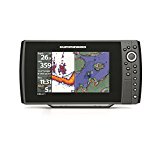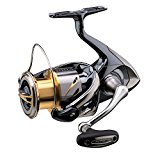Kelp Bass Night Fishing Information and Facts
Begin by casting out your line and let the line free spool: you will need a special reel that has a free spool option.
Many people think of the Kelp Bass (Calico Bass) as a day time bass. It is true that they are active during the day, but this does not tell the true story of this great fighting fish. The Kelp Bass is most active and feeding during the hours of dawn and dusk. Dusk is also when they spawn, which can last several hours.
As the waters warm, the kelp bass begin to spawn and continue spawning until mid fall. Some females spawn as many as four or five times during this period. All this activity makes for a very hungry fish. However, the rest of the year, when the water is cool, has them slow to react, down in deeper water and having a slow metabolism.
Prime Feeding Time
The best time to catch them at night is in the first several hours after sunset and the preceding hours leading up to sunrise again in the morning. During these hours they tend roam more freely seeking food and mating. Once they have mated, they tend to seek shelter, though they still feed throughout the night.
Outside of the prime fishing hours, the best days to fish at night are those with a bright full moon in combination with strong tidal movements.
We recommend the harbour, estuary and bay habitats during this time – areas that are greatly affected by strong tidal flows.
Chumming
Chum the waters at night. This will help drive the fish into a frenzy. Many anglers that fish kelp bass at night claim that the largest bass are actually caught at night with the help of this technique.
Feeding Tips
Kelp Bass take to anchovies, surf perch, sardines, queenfish and mackerel squid. However, we feel that one of the best baits to use is the squid. Kelp Bass take to this much the same way that freshwater bass take to the crayfish.
Nibble, Nibble, Strike…
We first talked about this technique in our autumn techniques section. As the waters cool off, it continues to work and land Kelp Bass. However, while it works well for cool-water fishing, it generates amazing results in the summer and early fall. Most of the time, your bait won’t even hit the ocean floor before getting a strike.
Begin by casting out your line and let the line free spool: you will need a special reel that has a free spool option. Free spooling lets the line spool off the reel freely, pulling as much line as it takes until you get a strike. After about eight feet, you will start to feel a few nibbles on the line. Let the line continue to free spool.
The nibbles are coming from smaller bait fish like surf perch. What you are waiting for is a heavy strike from a Kelp Bass. You might receive several nibbles before getting a solid strike.
Tackle: Rod, Reel & Line
Use a seven or eight foot fast tapered graphite rod with a smooth casting but tough cranking reel. A ratio of between 5 and 6 is sufficient. When it comes time to cast, crank the drag tight – don’t provide any give. As we have discussed before, this is a tough fishing fish so it is best to go with a line test of around 15 lbs to 20 lbs. While this may seem a lot, the Kelp Bass could still easily snap the line if you don’t manage the drag well. While going for a stronger line test will reduce the risk of losing a fish, it also will take the fun out of the catch.
Lures
Swim baits like soft rubber Berkeley Manic Shad work very well. The Big Hammer is another great lure to use. Don’t go with a Big Hammer any bigger than five or six inches.
Catch and Release
When the Kelp Bass spawn as many as five times a year, there numbers are not growing sufficiently. Coupled with increasing demand, there is a lot of pressure on the Kelp Bass sport fishing industry. We ask you to consider catch and release to help conserve the population.


